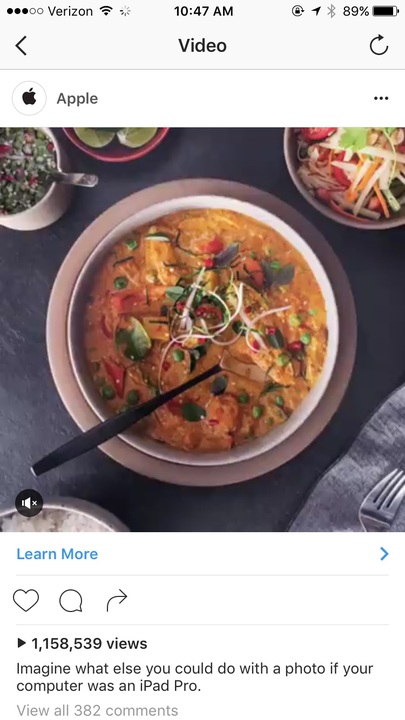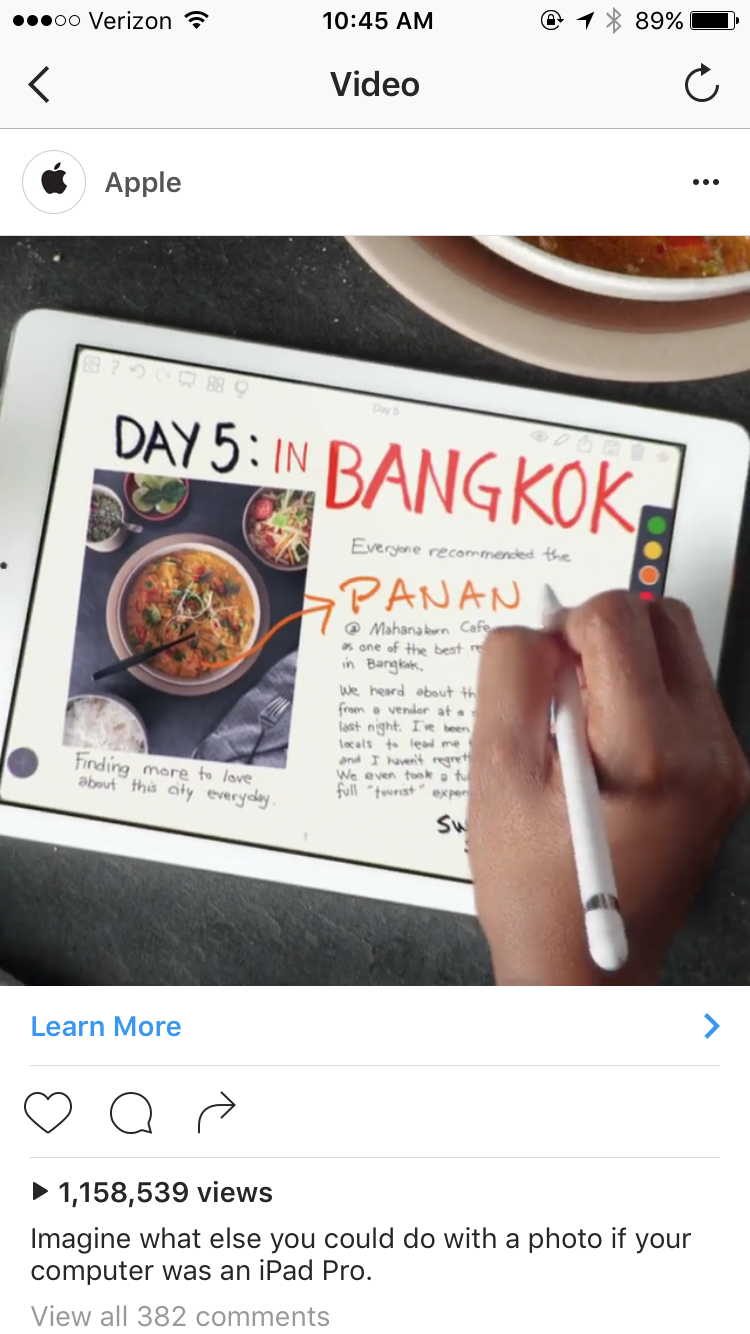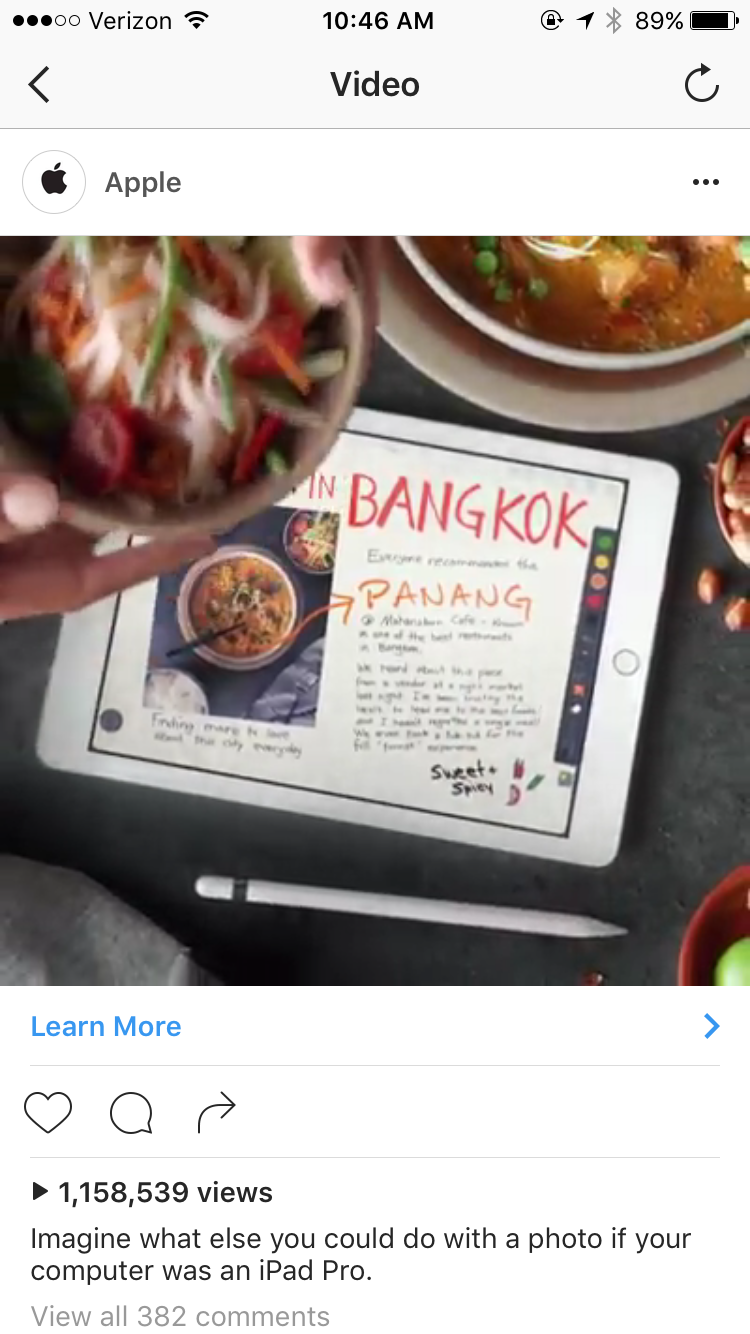Apple commercials are normally known for relentless optimism. They’re a sparkling mirror of us at our most creative—curing diseases, making music, laughing in a cashmere sweater.
But the one that auto-played in my Instagram feed a few nights ago was strangely depressing. It only got more depressing the more I thought about it.
The video opens with an attractive bowl of panang curry.

But then the camera zooms out. It’s not a bowl of panang curry, but a picture of a bowl of panang curry on an iPad. A hand holds a digital stylus and scribbles “PANANG CURRY” and “DAY 5: IN BANGKOK.”

Then it zooms out some more, revealing that picture of a bowl of curry is right in front of its real-life counterpart. Except the photographer isn’t eating the food—he’s painstakingly recording it for social media.

That’s when it hit me: Apple thinks that I’m the type of person who goes to Thailand and spends 30 minutes recording my food before I eat it. Apple thinks I’m that guy. And that a new way to share food porn will compel me to spend $800. Apple spent money to target me based on this belief.
The strange part is that you can’t find this ad anywhere online. It’s not posted on one of Apple’s Instagram accounts or the company’s YouTube channel. (Which is why I couldn’t embed the video.) You can’t link to the ad or search for it in any way. In marketing circles, this is known as a dark post, but it’s really more like a ghost. We can’t find it, but it can find us.
Ghost content isn’t unique to Instagram. Most major social networks—Facebook, Snapchat, Twitter, Instagram—feature these dark posts that slip across the web. They pop into our feeds and reveal a lot about our digital lives.
These dark posts are strange. Usually, we expect digital content to have a permanent home on the web. We can find it, share it. We can post it in our group chat and ask our friends in a panic, “Is this what Apple really thinks of me?!” (Note: This may only happen when most of your friends work in media.)
But we’re increasingly inundated with digital content that doesn’t have a home. Brands are pumping more and more money into social media advertising. They’ll spend nearly $33 billion this year, per eMarketer’s estimates, and over $50 billion by 2018. Often, that money is going to promoted content rather than direct response ads—not only because organic reach has fallen for brands across social networks (primarily Facebook and Instagram), but also because brands are creating more content than ever.
In other words, prepare to be spooked.
Image by
Shutterstock